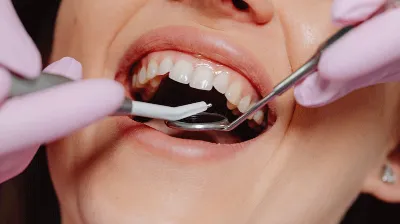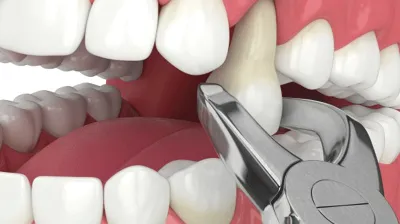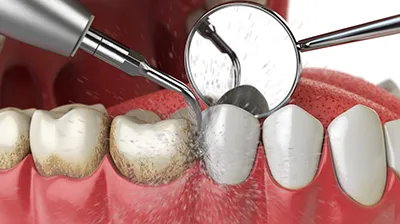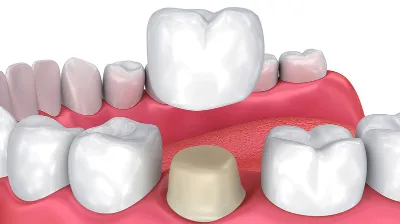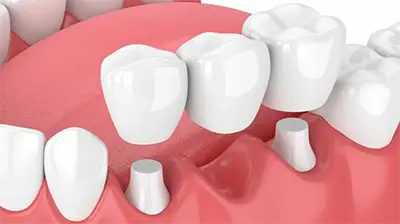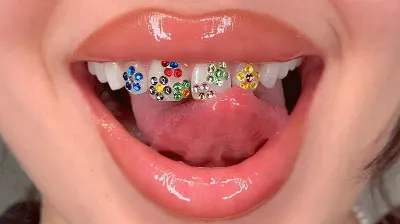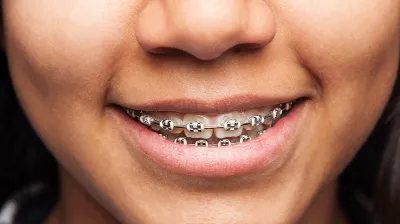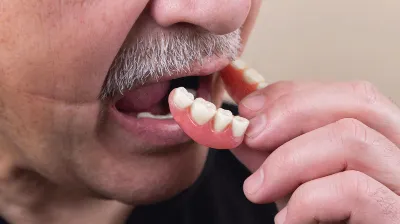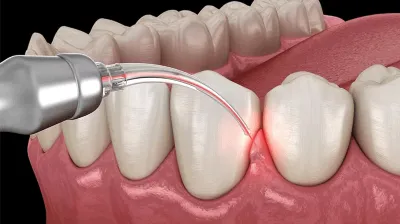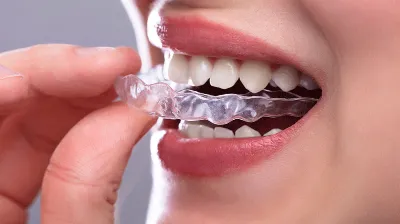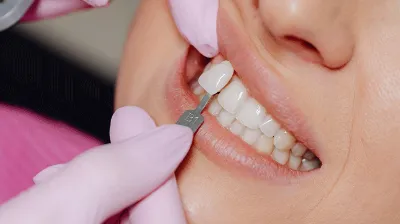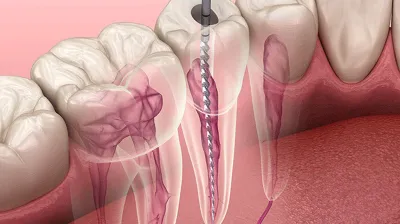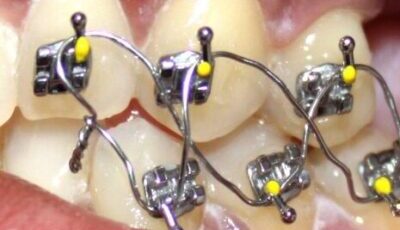Dental Bridges: Procedure, Types, Side Effects & Cost
Every Smile Dentistry provides professional Cosmetic Dental Care to make your smile look its best. We want you to be happy with your smile, so we are dedicated to making sure that your dental results are natural-looking, life-changing and long-lasting.
Patient-Centered Care
Tailored, comfortable dental services for every individual smile.
All Medical Aids Welcome
Quality dental care made accessible by accepting all medical aids.
Transparent Pricing
Exceptional care at honest prices, ensuring value for every patient.
Providing Quality Dental Care With Experienced Doctors
Get a dental health checkup with a dentist that has your best interest in mind and offers fair rates.
1. Book An Appointment
Visit our website and book an appointment with one of our experienced dentists.
2. Come In For A Consultation
Our team will sit down with you and discuss your dental needs and goals.
3. Get The Perfect Smile
We’ll work with you to develop a treatment plan that will get you the perfect smile.
What Are Dental Bridges?
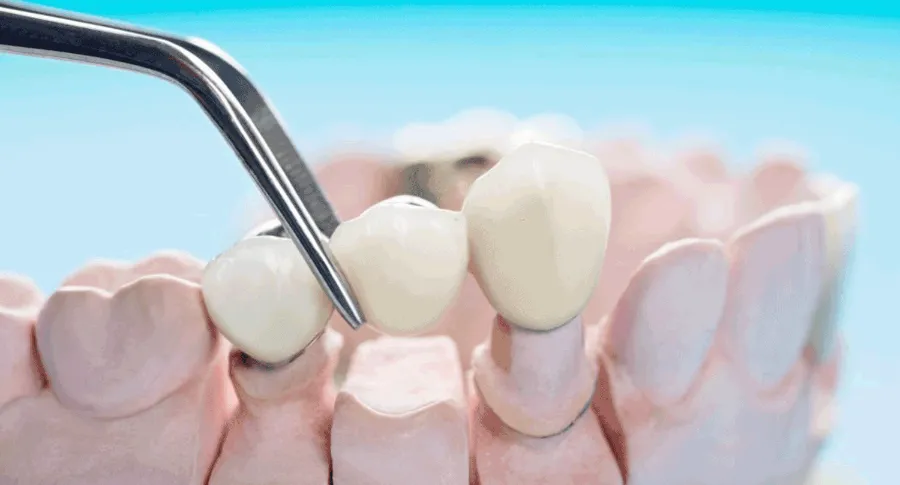
Dental bridges are a natural-looking, long-lasting solution to missing teeth. A dental bridge is a false tooth.
They’re made by placing crowns on the surrounding teeth and attaching them together with a false tooth in the middle.
At Every Smile Dentistry, we believe that dental bridges are the best way to replace missing teeth.
They create optimal function and aesthetics in your smile, allowing you to eat, speak, and smile confidently without any discomfort or embarrassment.
In fact, dental bridges are an excellent option for people who have had root canals or gum surgeries because they don’t require any invasive procedures.
At Every Smile Dentistry, we’ve been helping patients get the smile they’ve always wanted since way back till now and we’d love to help you too!
What Qualifies You For A Dental Bridge?
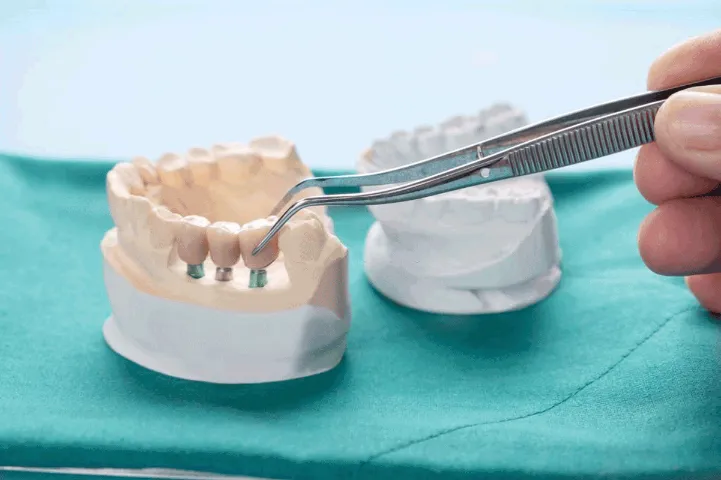
A dental bridge is not appropriate for everyone. If a bridge would be advantageous for you, you should discuss this with your dentist. You may be an excellent candidate for a dental bridge if you meet the following criteria:
- One or more permanent teeth are missing.
- Being in good general health (e.g., no serious medical conditions, infections, or other health problems).
- Having solid bone structure and healthy teeth to support the bridge
- Having clean teeth.
- Able to practice good oral care to preserve the condition of the dental bridge.
Types Of Dental Bridges
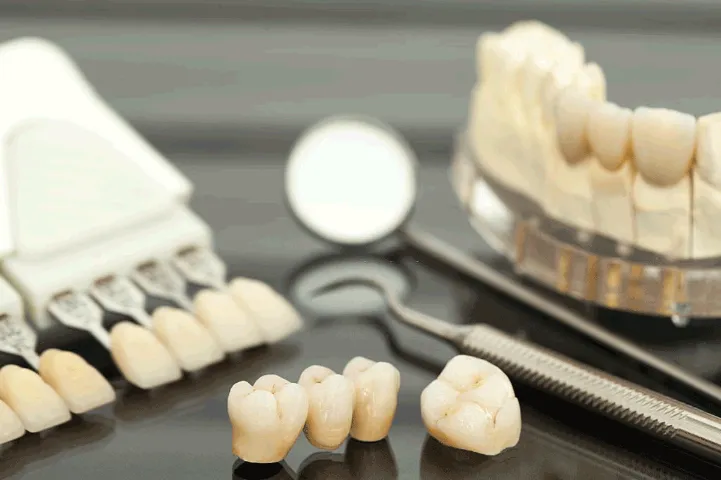
Dental bridges come in four basic varieties:
- Traditional bridge
- cantilever
- Maryland
- Implant-supported
Regular/ Traditional dental bridge
An artificial tooth or teeth are kept in place by dental crowns that have been bonded to each of the abutment teeth in a typical dental bridge.
When you have healthy teeth on each side of the gap left by your missing tooth, you can use a conventional bridge, which is the most common form of a dental bridge.
Dental bridge with cantilevers
Cantilever dental bridges are similar to typical bridges in that just one abutment tooth serves as the anchor for the pontic, which is secured in place by a dental crown.
You just need one healthy tooth next to the gap left by the lost tooth to support a cantilever bridge.
Maryland bridge for teeth
Dental bridges made in Maryland need two healthy abutment teeth—one on either side of the gap—just like a conventional bridge does.
A Maryland bridge, on the other hand, employs a framework of either metal or porcelain that is bonded onto the backs of the abutment teeth, whereas a typical bridge puts dental crowns on the abutment teeth.
A Maryland bridge, like a standard bridge, is only an option if there is a natural tooth on each side of the gap left by the lost tooth or teeth.
Dental bridge supported by implants
As the name suggests, dental implants are used to support bridges rather than frameworks or crowns.
For every lost tooth, an implant is often surgically implanted, and this implant holds the bridge in place.
If it is not possible to place one implant for each lost tooth, the bridge may consist of a pontic hanging between two implant-supported crowns.
An implant-supported bridge often needs two procedures and is said to be the strongest and most stable system:
- embedding the implants into the jawbone
- another procedure to implant the bridge
The process may not be done entirely for several months.
What Does A Dental Bridge Look Like?
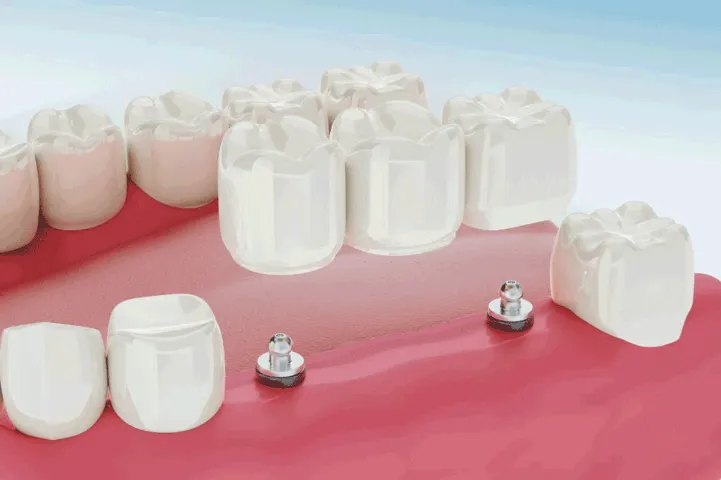
A dental bridge, as its name suggests, is a type of bridge that dentists employ to replace lost teeth.
A dental bridge spans over a gap left by one or more missing teeth in order to reconnect the neighboring teeth, much like a bridge spans over a chasm to connect two pieces of land.
A dental bridge resembles a row of teeth in the most straightforward sense. But a dental bridge’s structure is significantly more complex.
The first thing to know is that there are four different types of dental bridges, and each type has a different appearance.
Once in the mouth, all four varieties may appear the same, although there are small distinctions between them.
Why Do I Require A Dental Bridge?
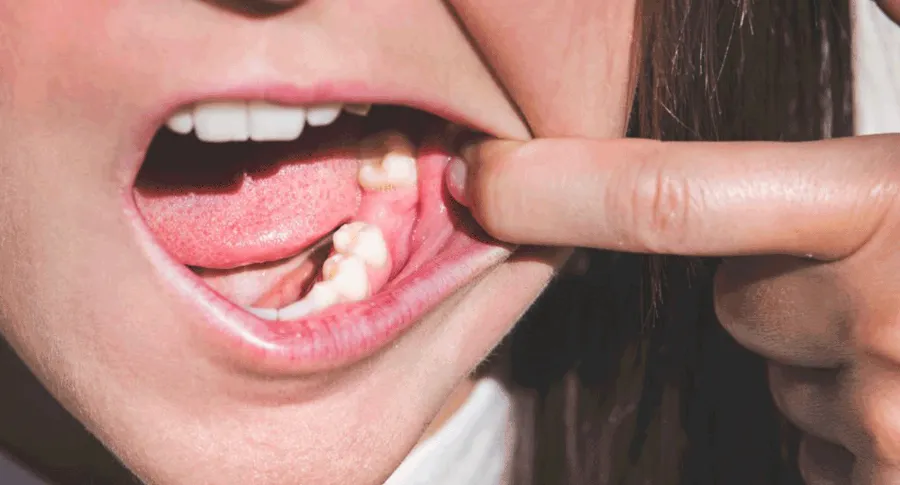
Having a lost tooth or teeth can have a variety of effects on you. A dental bridge can take care of those modifications, such as:
- getting your grin back
- regaining the capacity to chew properly
- regaining your speech and pronunciation, keeping your face in its natural shape, and altering your bite to evenly distribute the force when you eat to prevent your remaining teeth from shifting from their natural positions.
Dental Bridge Procedure
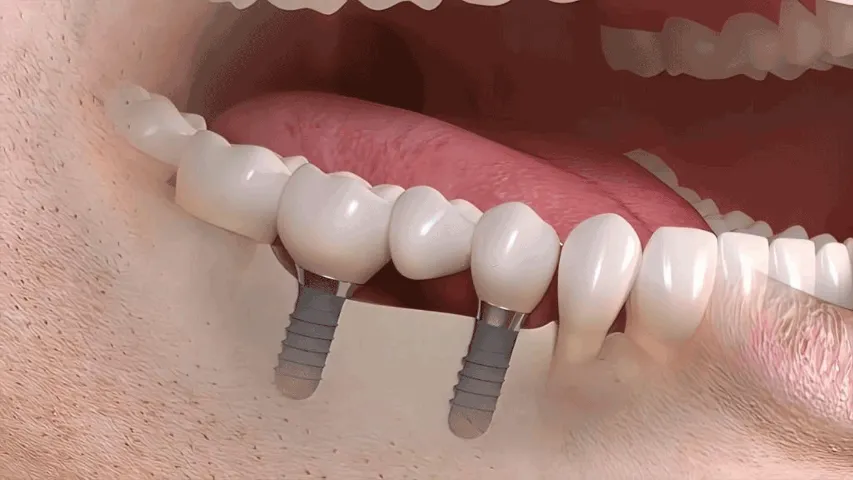
Getting dental bridges is a process of two steps. First, you need to have your teeth prepared so that they can be fitted with crowns (false teeth).
Then, when you get the new crowns placed, a permanent bridge will be put in place.
The first step is to make sure that all of your teeth are healthy and strong enough to be worked on.
The dentist will then take an impression of each tooth being worked on and will send it off for lab work. Once this is done, the dentist will check to make sure that no nerve tissue has been damaged during the preparation process.
Once everything is approved by the dentist, he or she will place temporary crowns on each tooth being worked on in order to protect them from damage while they heal from any necessary procedures.
After this has happened, the dentist takes another impression of those same teeth so he or she can make sure everything fits correctly before making permanent crowns for each one individually.
Once everything fits perfectly and has healed completely (usually about two weeks but could take longer depending on how much preparation was needed), then comes time for final placement of dental bridges!
This means removing all temporary crowns as well as any other temporary materials used during healing process such as root canal treatment etcetera).
How Much Does A Dental Bridge Cost?

A dental bridge may be partially or entirely covered by dental insurance if you have it.
Without insurance, a dental bridge might cost anywhere between R3 500 and R5 000 per tooth.
Side Effects Of Dental Bridges
Dental bridges are frequently used to fill the gap left by one or more missing teeth.
They’re basically a replacement for your natural tooth, but they’re held in place by crowns on either end of the bridge.
Dental bridges can be made of several different materials, including porcelain and gold. They’re typically bonded to your existing teeth with dental cement or dental composite resin.
If you need a dental bridge, you’ll probably have to undergo two separate appointments: one for the preparation work and another for the actual installation of the bridge itself.
If you’re trying to decide whether getting a dental bridge is right for you, it’s important to know about all of its risks as well as its benefits.
The most common side effect is soreness in your jaw because it takes a while for your mouth to adjust after receiving dental cement or composite resin bonding material.
In rare cases, some patients report feeling dizzy when eating food that has been prepared with certain spices that contain oils such as garlic or onion seeds (because these spices have oil).
Implants Versus Dental Bridges
Bridges are covered by many dental insurance policies, and many now also cover implants.
Depending on how well it is taken care of, a dental bridge could need to be updated every five to fifteen years, whereas implants are thought of as a permanent option.
Dental hygiene is one factor that can shorten the lifespan of all bridge types, including implants.
Dental Bridges Diet Modifications

You might need to be extra cautious about what you eat in the immediate aftermath of having your bridge installed because your mouth is healing. During that time, your dentist will provide you with detailed instructions to follow.
Long-term damage from specific meals to dental bridges or abutment teeth is possible.
You must maintain a balanced diet and stay away from these meals if you want your bridge to last and protect it.
The following foods should be avoided if you have a dental bridge:
Sticky/crunchy candies (can pull crowns off of the abutment teeth)
Hard candies or foods
Sweet foods (can cause tooth decay under the crowns)
Cosmic Nuts
Every Smile Dentistry Treatments
Every Smile Dentistry is a professional dental practice that includes General, Cosmetic, Aesthetic, and Emergency for you and your family with a team of experienced dentists and friendly prices.
Frequently Asked Questions
You can always submit a contact request if you have more questions or email info@everysmile.co.za
Can l take my dental bridges out during the day?
The term “fixed” dental prosthesis does not apply to a dental bridge. We glue the gadget to your teeth, so it stays in place all day and all night. Dentures could be a good alternative if you’re searching for something detachable.
How can I extend the life of my bridge?
Do you want to know how to make your bridge last longer? This is easy! Try your best to maintain regular preventative care. This entails maintaining regular daily oral hygiene routines, such as brushing and flossing. Additionally, it entails coming in for cleanings and examinations at the intervals we advise – the majority of patients should come in once every six months.
Do dental bridges hurt?
As your mouth heals and adjusts following a dental bridge treatment, you could experience some pain and discomfort. Your dental bridge shouldn’t ache or be uncomfortable once you’ve recovered.
WHAT PEOPLE ARE SAYING ABOUT US
Don't just take our word for it.
EXCELLENTTrustindex verifies that the original source of the review is Google. I visited Every Smile Dentistry for the first time today and I am pleased with the service I received. The receptions was very warm and welcoming. I was attended to by Dr A Somtunzi who was also so friendly and welcoming. I had my teeth cleaned and a filling done. She gave a detailed explanation of what needed to be done. She was so gentle and I felt no discomfort at all. I’m happy with the work she did. Outside the excellent service, I think the thoughtful gesture of having ladies essentials in the rest room for everyone to use won my heartPosted onTrustindex verifies that the original source of the review is Google. Did a filling and washing of teeth. Amazing pain-free experience, user friendly from online booking to sitting on the dental chair. GQEBERHA branch treated me soft.Posted onTrustindex verifies that the original source of the review is Google. Haven't gone to the dentist in years so I was really nervous about this visit but the atmosphere in that office? So calm and so friendly. I would recommend this place to everyone, Sthabile Aphiwe Majola is definitely the kind of dentist everyone wants to have✨✨.Posted onTrustindex verifies that the original source of the review is Google. Best place ever,first the receptionist is so friendly and welcoming and the doctors are the best they make you feel comfortable before everything I would recommend them to anyone👌Posted onTrustindex verifies that the original source of the review is Google. The staff ,Dr Govender they are so friendly, they made me to feel very comfortable I would go there every time I want to do my teeth
Locations We Serve
Every Smile Dentistry offers a team of experienced dentists in South Africa in a variety of areas with friendly prices.

